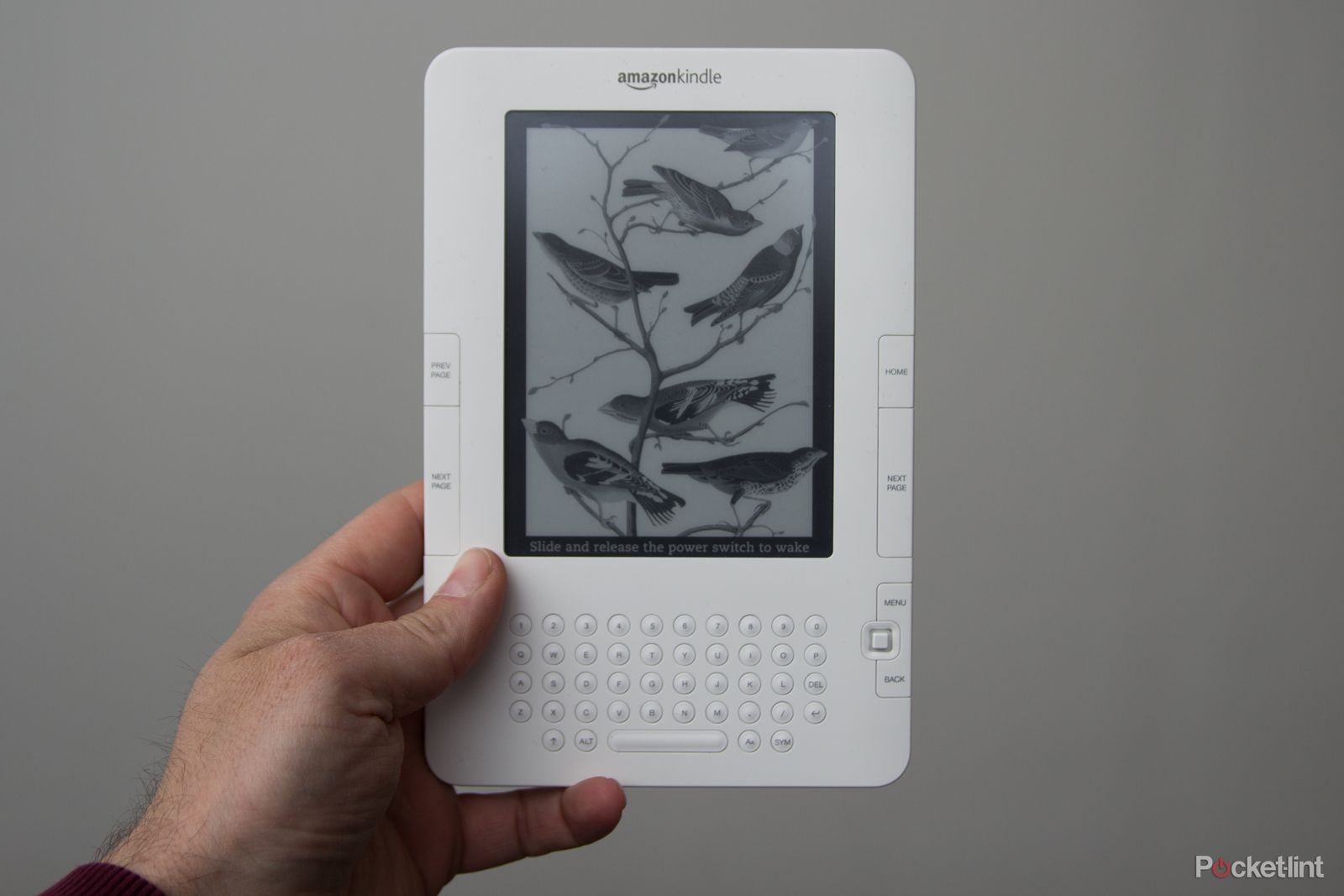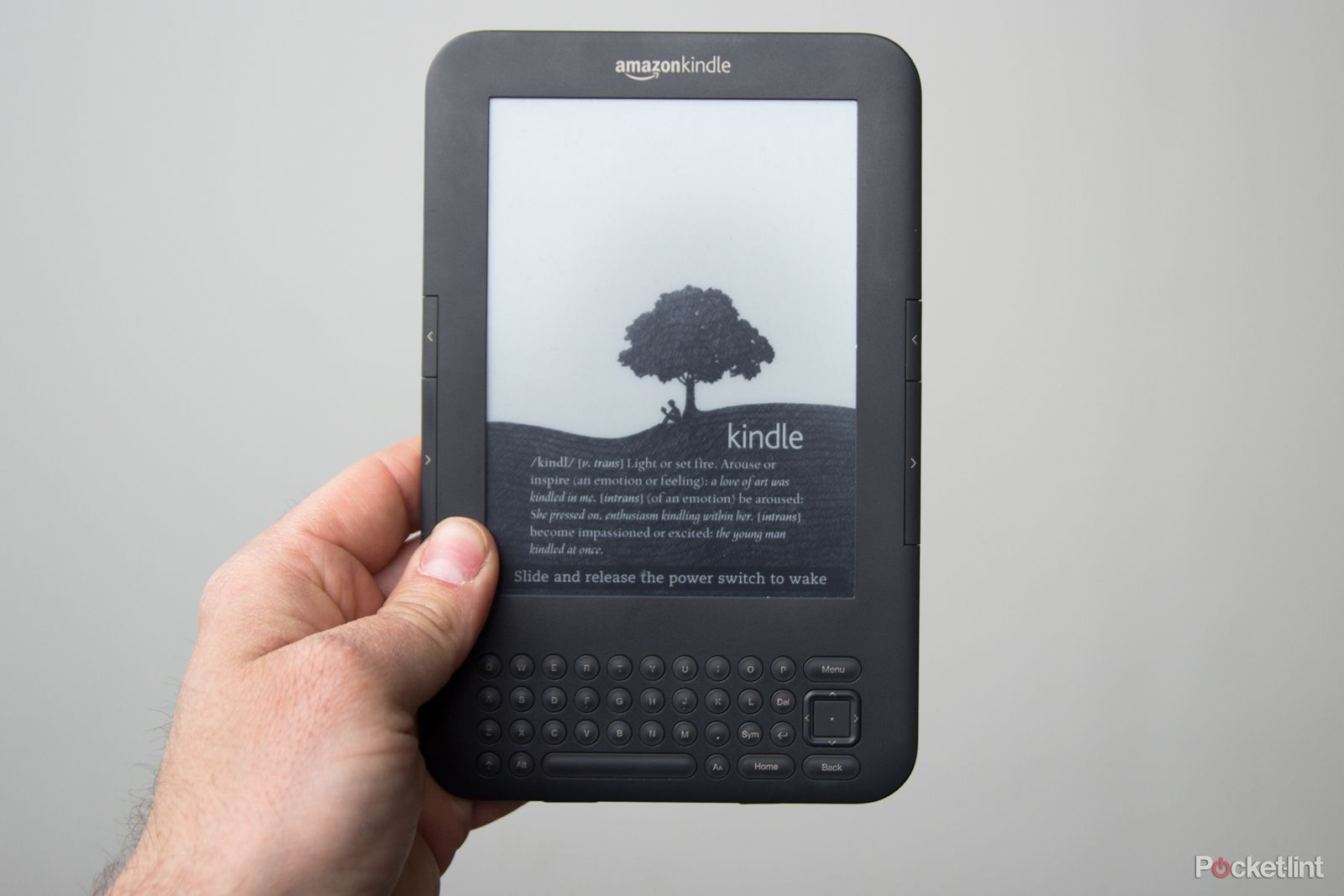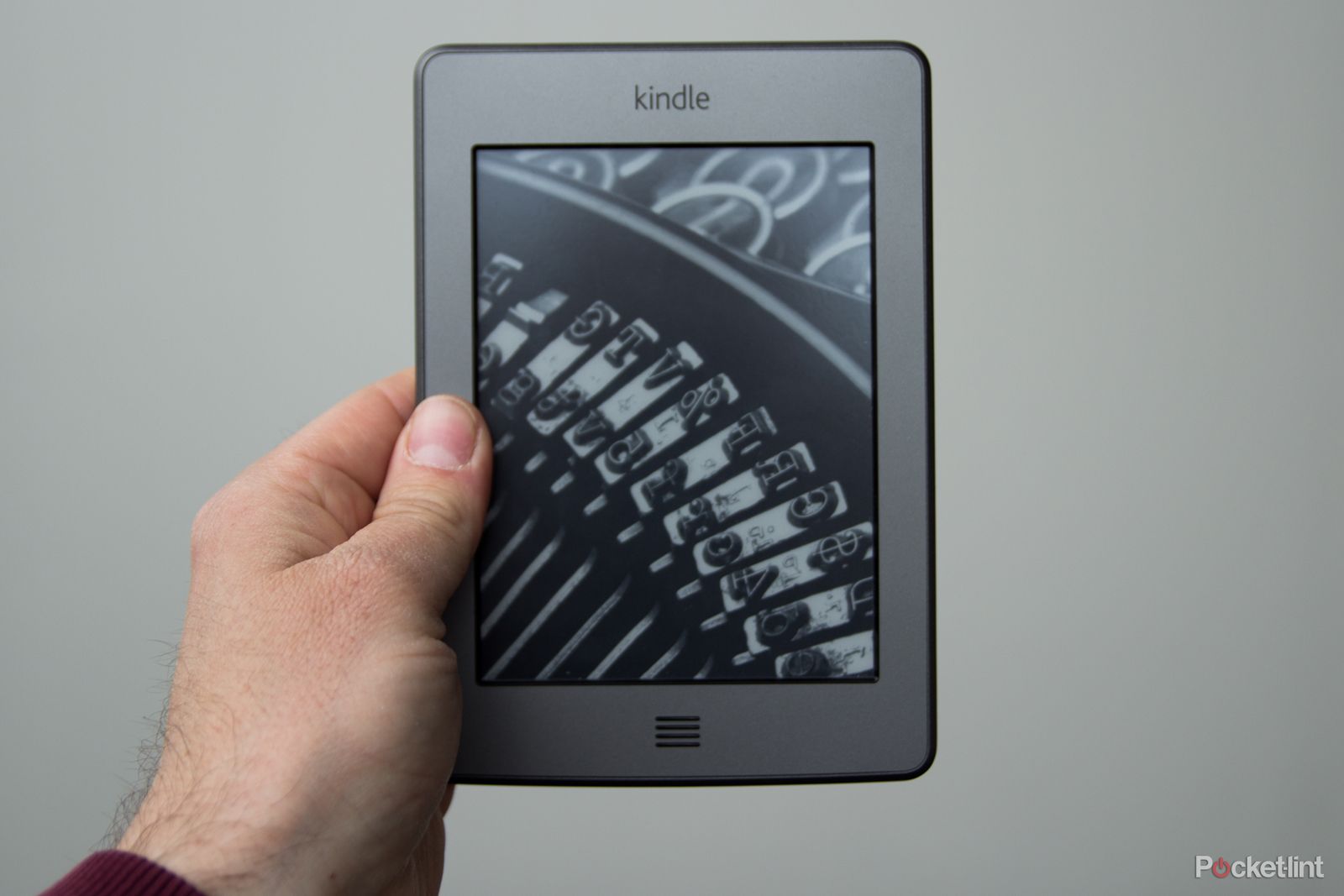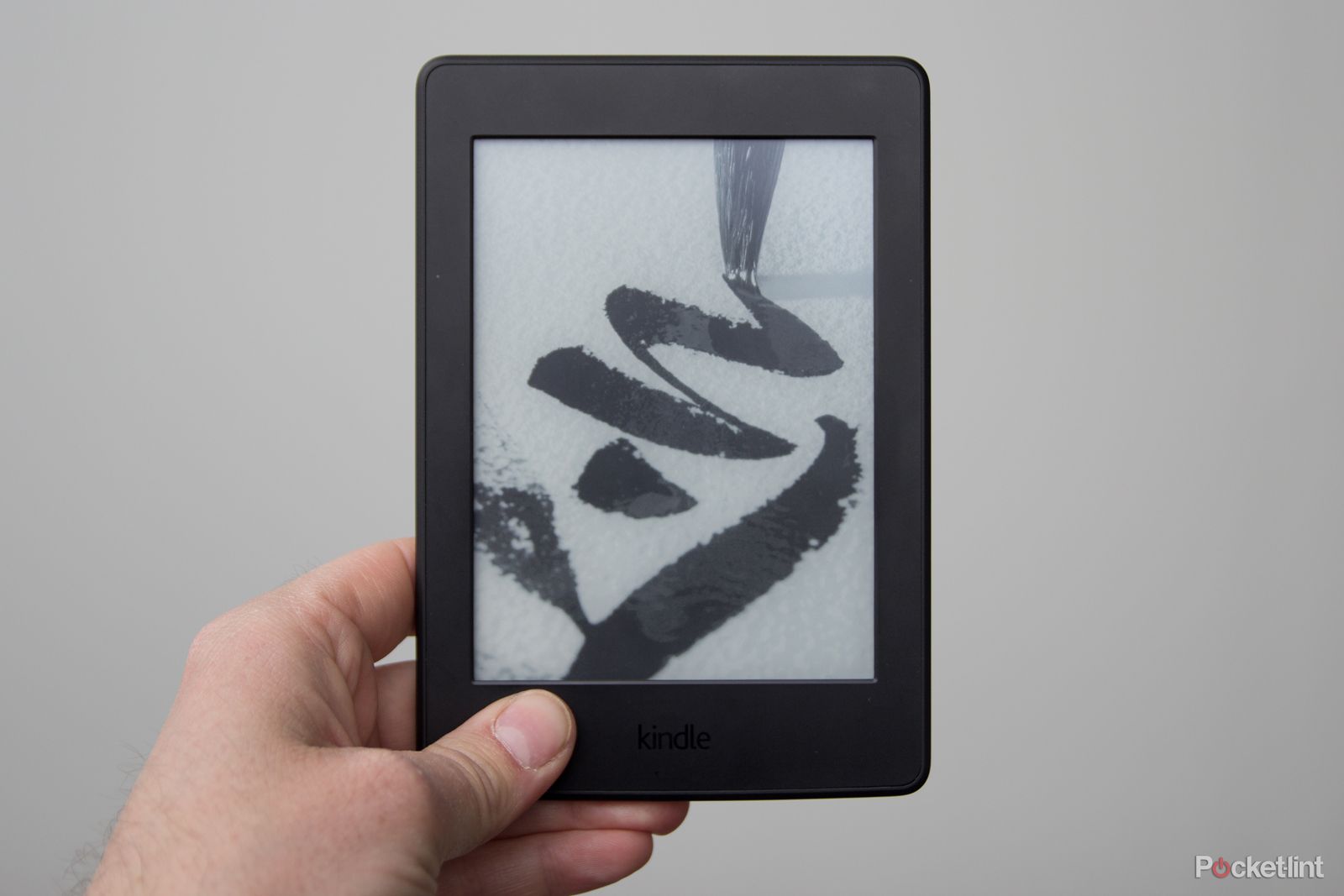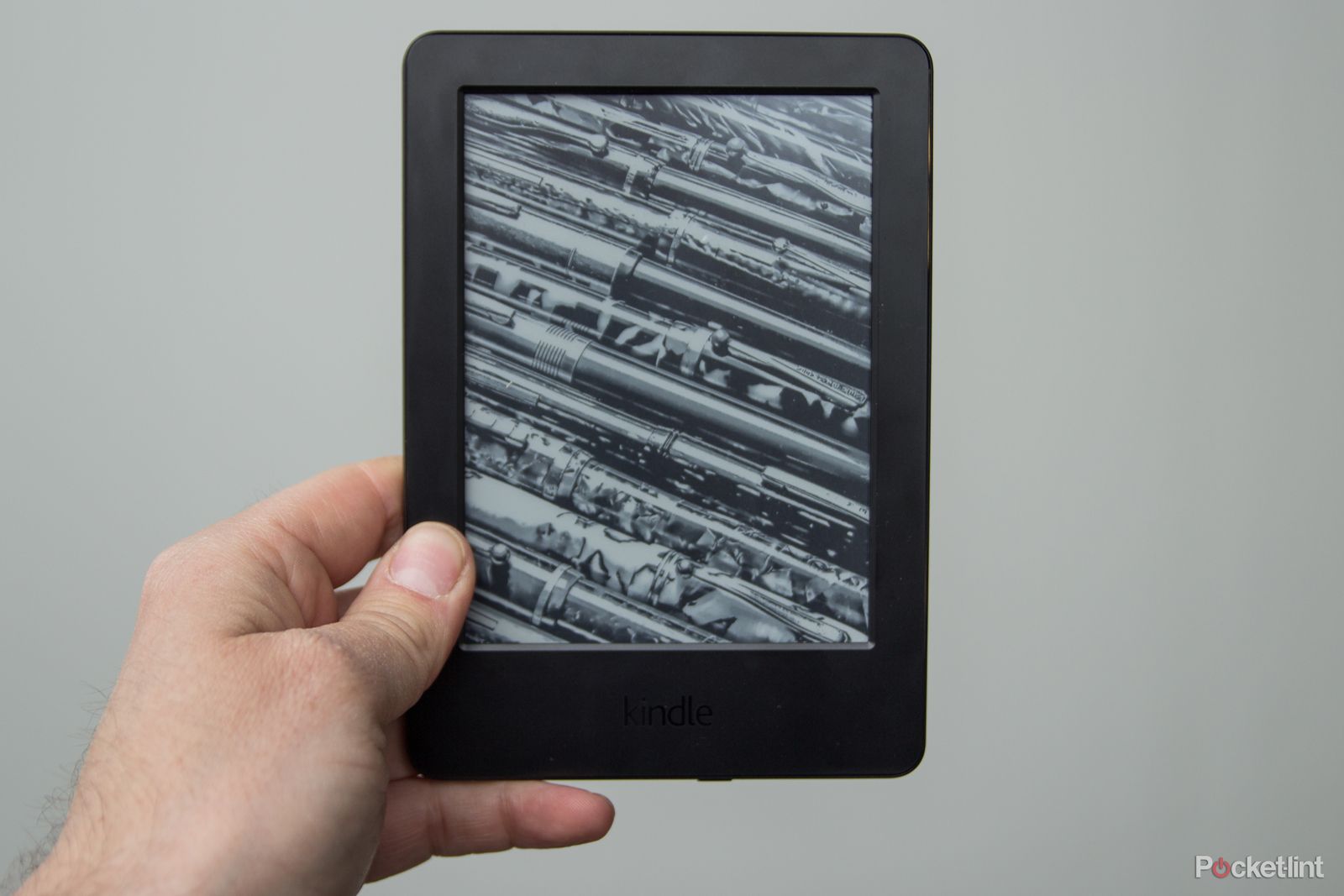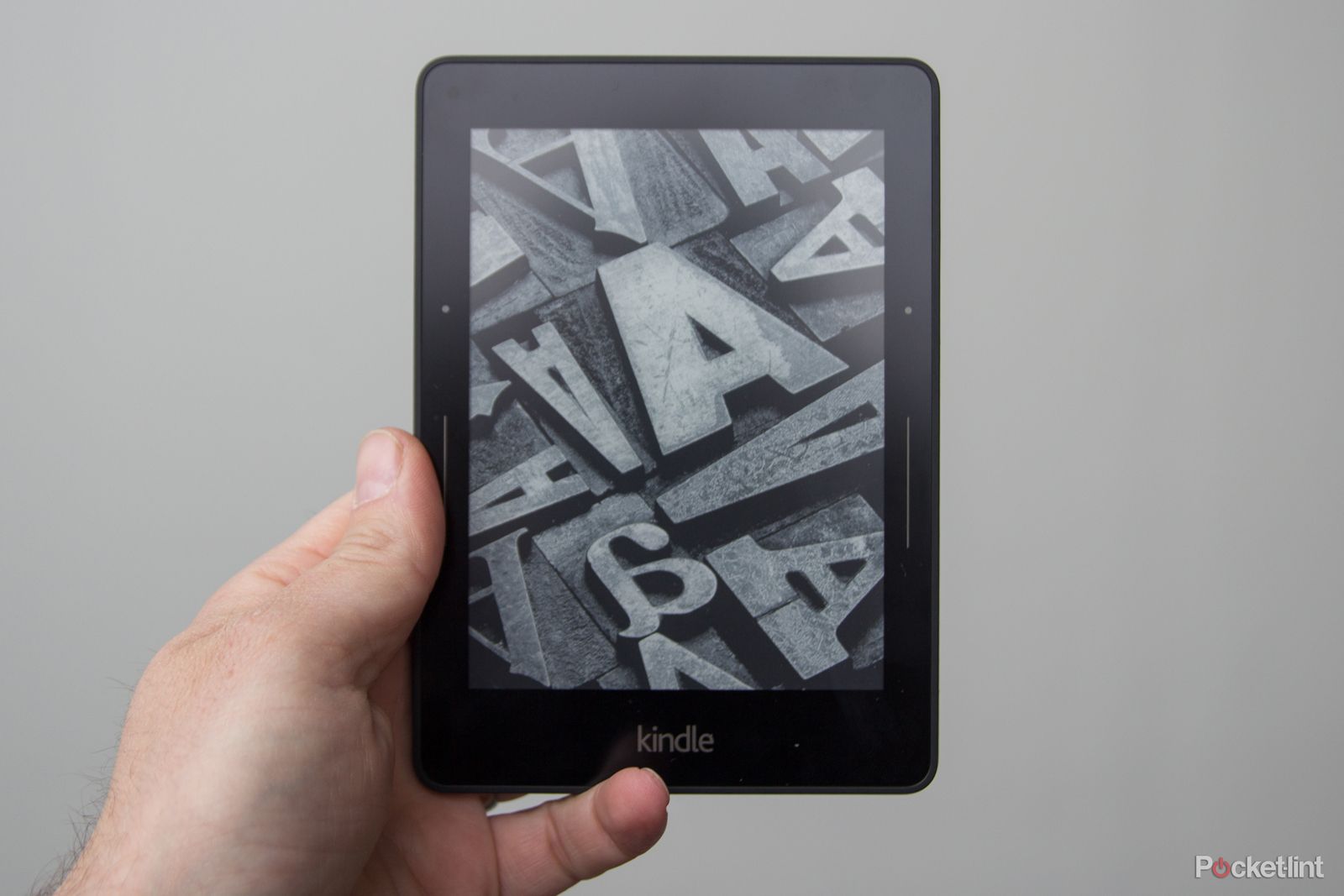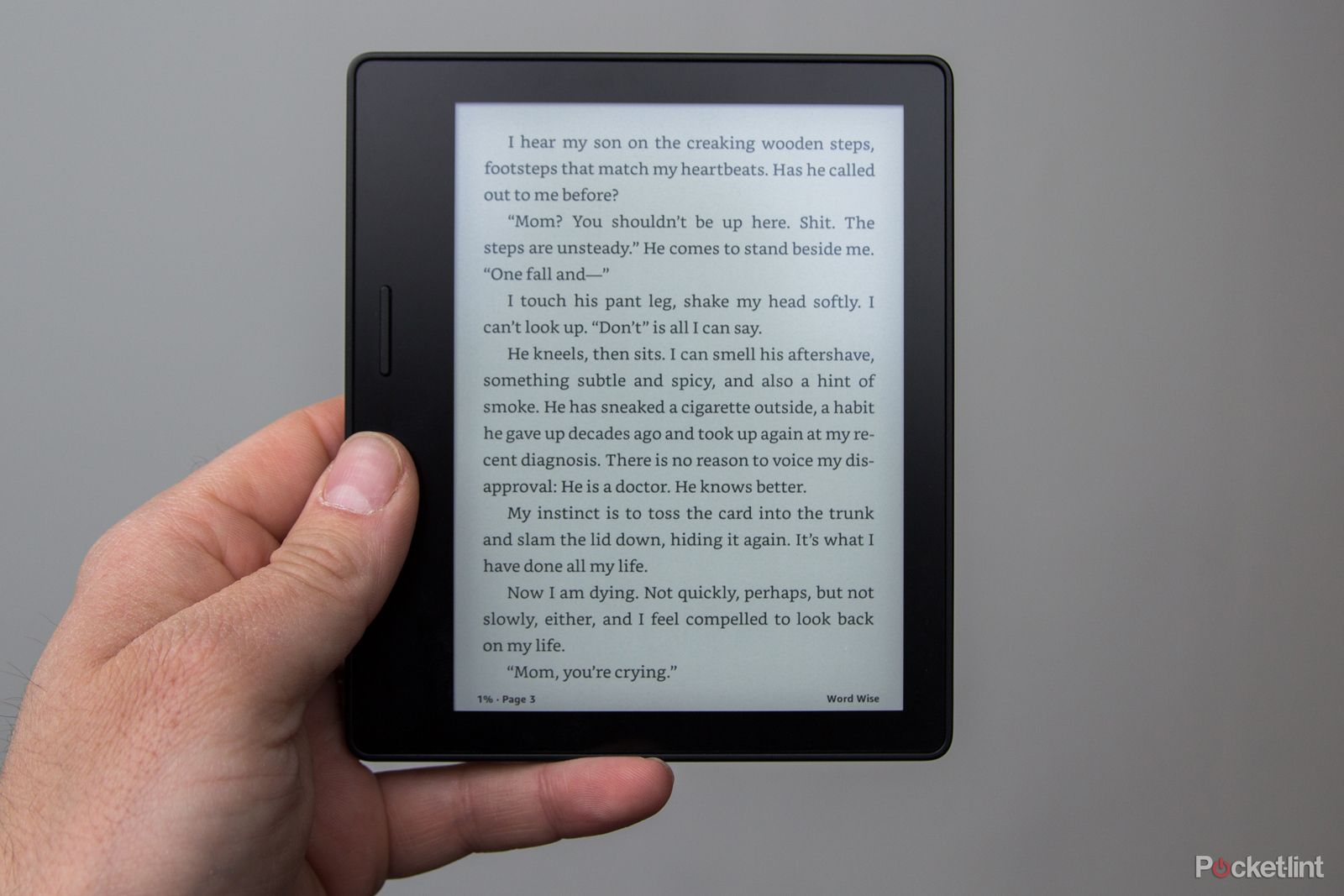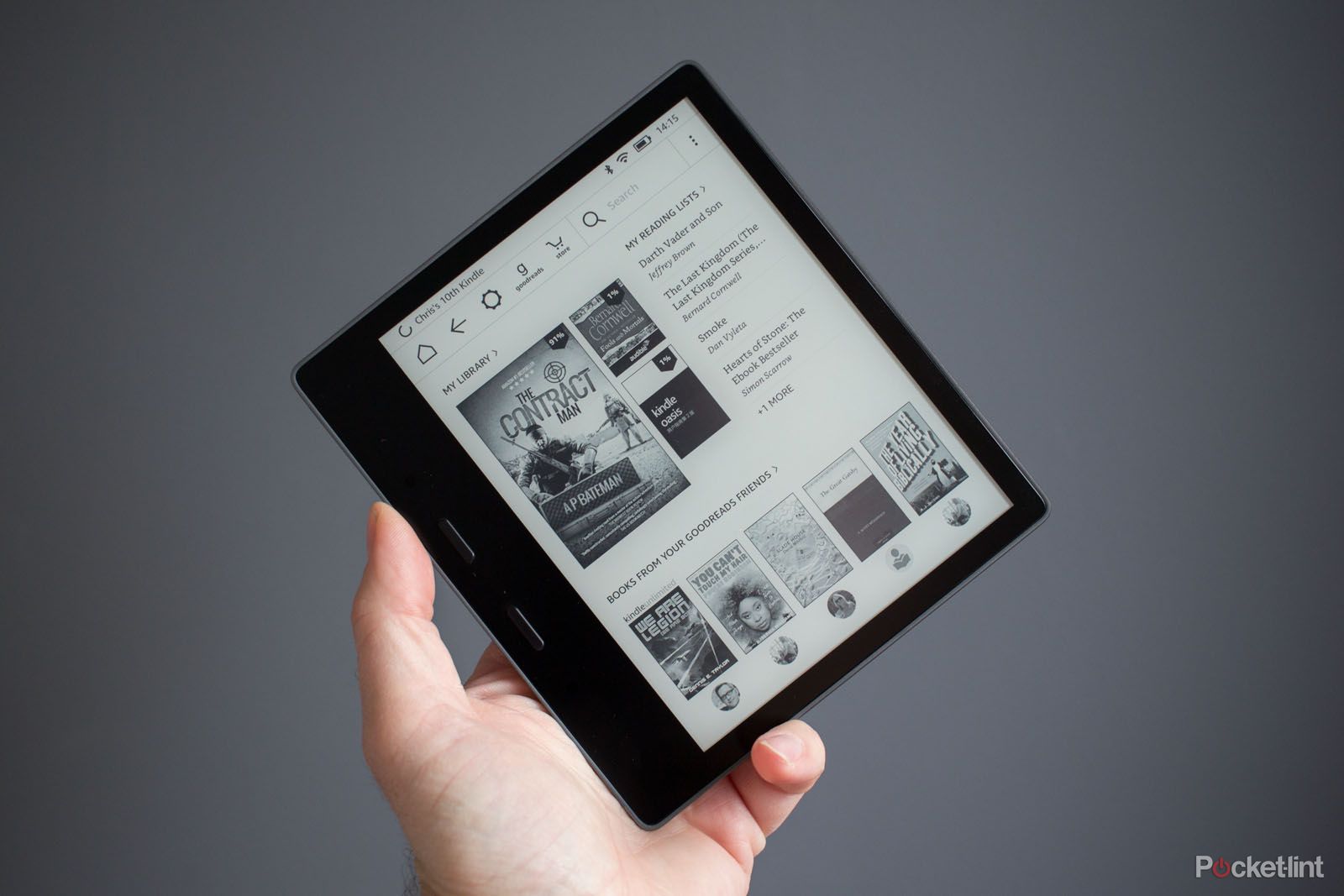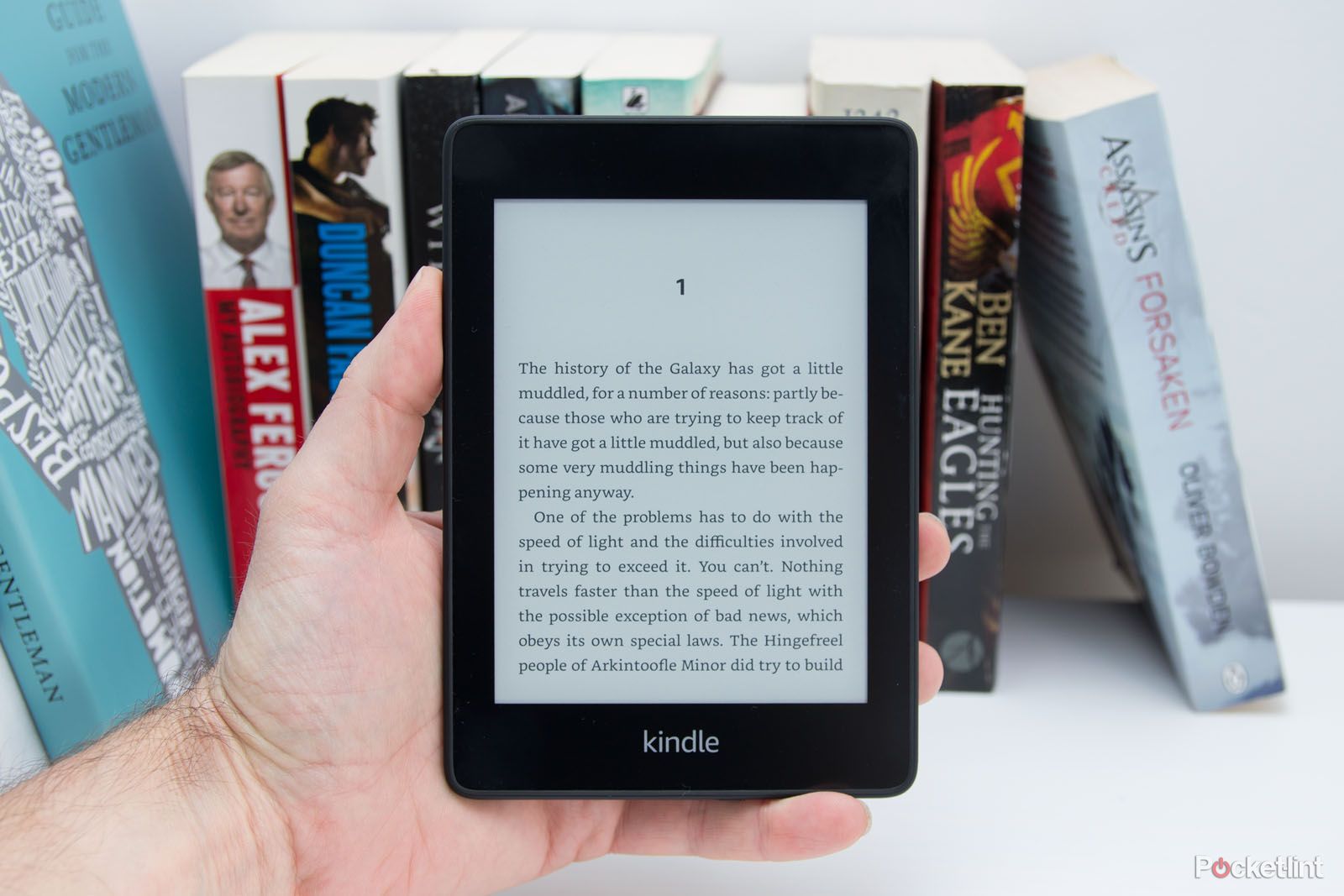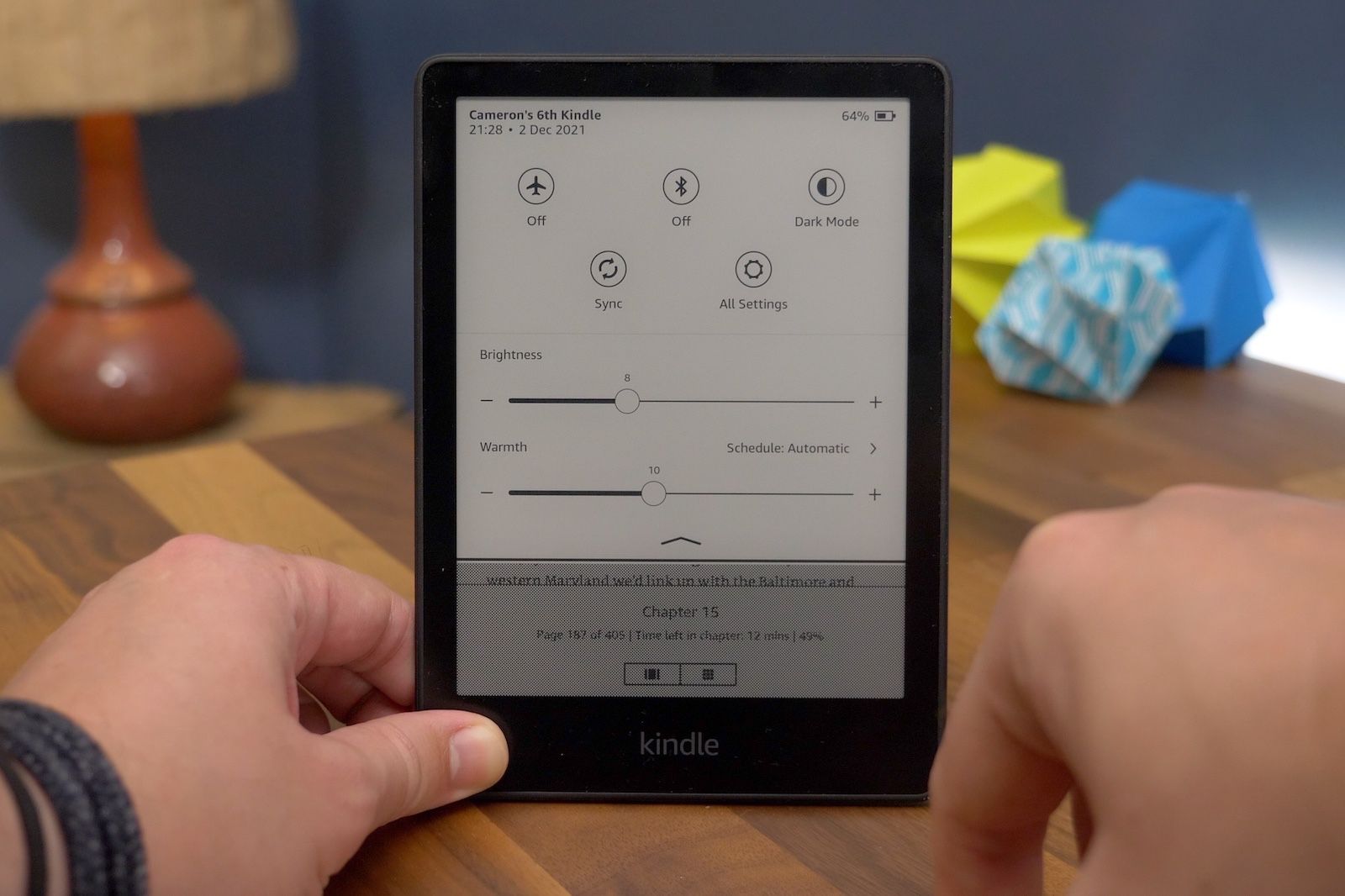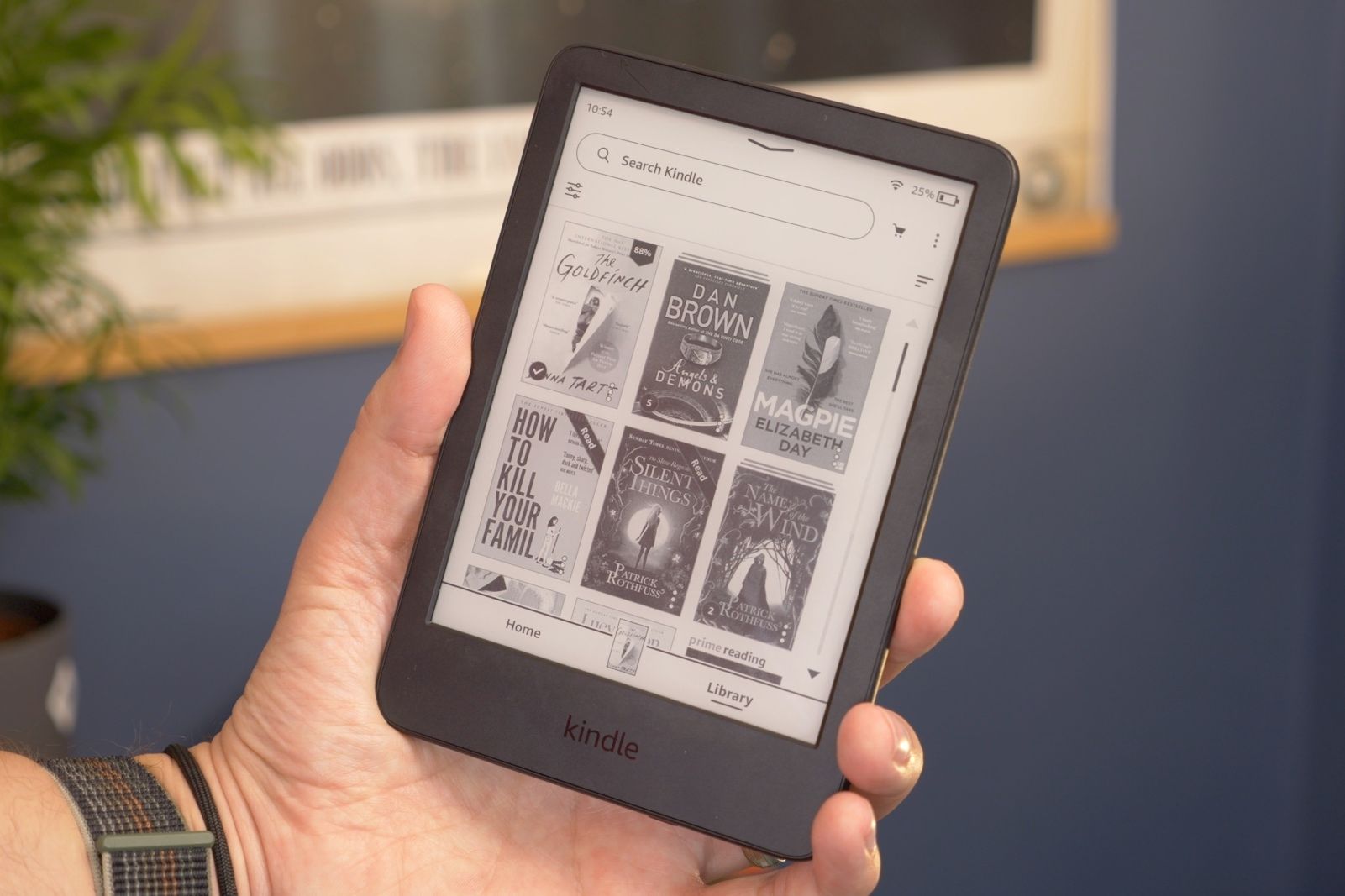The Amazon Kindle was launched with one real aim: to bring people books. The Kindle was never designed to compete with tablets and sticking to this principle has allowed the Kindle to evolve through to the present day and excel at its task.
The Kindle has remained one of our favourite devices. Where tablets, phones, PCs and TVs have seen radical changes, the technology and the functions of the Kindle have remained true to task, but evolving in pace with technology.
The Kindle gives you access to digital books and provides the best method for reading them and that’s the guiding principle that drives the Kindle on. It’s about reading, reading and reading. It’s a tool for a single job, not a tool for many (there’s the Kindle Fire for that, which we’re ignoring here.)
We’ve been looking over the archives of Kindle history, starting from Amazon’s original ebook reader, through to its present-day devices.
Amazon Kindle (2007)
Launched in November 2007, the first generation Amazon Kindle was showcased in NewsWeek magazine. It went on sale on Amazon.com on 19 November and sold out within hours and was immediately dubbed “the iPod of reading”. The original Kindle launched with a 6-inch E Ink display, offered a free wireless connection over Sprint’s EV-DO network, on the new Whispernet announced by Amazon.
There was no touch control, however, so the Kindle offered a full keyboard, navigation buttons and a quirky wedge-shaped design aiming to make it better to hold. It also offered a speaker and headphone socket, and expandable SD card storage.
Because page navigation was difficult, it featured a second display with a scroll wheel to help make selections on the display easier. That was needed because the E Ink display was too slow to refresh to give a natural navigation experience.
It cost $399 and was only available within the US, offering access to 90,000 books at launch.
Amazon Kindle 2 (2009)
On 9 February 2009 Amazon updated the Kindle with the launch of the Kindle 2. The crazy design of the 2007 Kindle was swapped for a more conventional, flatter, design, with a button layout that was flatter and less dominating. It retained the 6-inch E Ink display, however, improving the technology for faster page turns and better refreshing, while moving from the original 4 shades of grey to 16. There was a storage boost too, moving up to 2GB of internal storage for 1000s of books. A new navigation controller was added to make it easier to select text and options on the screen.
The Kindle Store by this time had expanded to around 230,000 titles and the Kindle 2 launched with a Steven King exclusive, called Ur.
It cost $359 originally, discounted to $299 and then $259. The Kindle 2 was then dropped for the Kindle 2 International Edition that was announced on 7 October and shifted to GSM for global wireless connections.
The Kindle also fractured off into a line of larger devices called the Kindle DX aimed at magazine reading, but only survived two generations before they stopped being offered.
Amazon Kindle Keyboard (2010)
The Kindle Keyboard was the first Kindle to sell natively in the UK, announced on 29 July 2010. It was launched originally as Kindle 3, an obvious evolution of the Kindle 2, but then changed its name to the Kindle Keyboard.
The Kindle Keyboard again made the page turn controls more compact in the edges and slotted the navigation controller alongside the keyboard. It still didn’t offer a touchscreen, so that keyboard was used for browsing and buying from the Kindle store.
The other big departure was a Wi-Fi only version, meaning a lower pricing point. It was $139 for Wi-Fi and the 3G version costing $189. The new UK Kindle Store opened on 27 August 2010, with access to 400,000 books.
The display is still a 6-inch E Ink display, by now offering 600 x 800 pixels.
Kindle Touch (2011)
On 28 September 2011, Amazon had a huge day, announcing not only a fourth-generation Kindle, but also the Kindle Fire as it branched into tablets. However, for the Kindle family, the most important device was the Kindle Touch. The Touch was the first implementation of touchscreen, dropping the navigation keys and the keyboard.
The new device retained the 6-inch E Ink display, but now touch was added because Amazon felt the refresh rate was fast enough and the experience clean enough to make this move. There was 4GB of storage and a battery life of weeks.
The Kindle Touch was again available in Wi-Fi and 3G versions, it introduced Amazon’s X-Ray feature. It was originally launched in the US, but became international in March 2012. The Kindle Touch cost $99 for Wi-Fi and $149 for 3G at launch in the US.
Kindle Paperwhite (2012)
The rumours of a front-lit Kindle appeared not long after the launch of the Touch, but it was 6 September 2012 when Amazon announced the Kindle Paperwhite. The first generation device added illumination to the display which was a major breakthrough, meaning you could now read in the dark, with manual brightness adjustment.
It was originally launched with a 6-inch 212ppi display and in 3G and Wi-Fi editions, again relying solely on touchscreen navigation.
The second edition (Paperwhite 2) was announced on 3 September 2013 with an upgraded E Ink display offering better contrast and faster page turns thanks to a more powerful processor. The illumination was also improved for more a more even front light.
The third edition Kindle Paperwhite was announced on 30 June 2015 and stepped the E Ink display up to 300ppi, with twice the number of pixels of the 2012 model. This model also saw the debut of the Bookerly font, Amazon’s own font designed for reading.
Amazon Kindle (2014)
While most of the attention has been taken by the advancements firstly to touch and then to the front lighting of the Paperwhite, the humble Kindle continued. Announced in 2014, this version of the Amazon Kindle was heralded mostly for its price, launched alongside the advanced Kindle Voyage. This Kindle is perhaps basic by comparison, but with a price of only $79, it was the cheapest Kindle, but still fully featured, offering a great entry point into the world of ebook readers.
The Kindle offered full touch control and a 6-inch E Ink display, but didn’t offer a 3G connection, sticking to Wi-Fi only. There was 4GB of storage and a battery that would last you through weeks of reading. The standard Kindle was updated in June 2016 and added Bluetooth, but had much the same design and display as the 2014 version.
Amazon Kindle Voyage (2014)
The Kindle Voyage takes much of what Amazon has done elsewhere and refines it further. It was announced on 18 September 2014 alongside the £59 basic Kindle, offering quite a contrast in the Kindle family.
The Kindle Voyage looked to enhance the Kindle experience, removing the bezel and placing touch controllers next to the display to make page turning easier without having to swipe the display. At the same time the display steps-up offering adaptive front lighting, a feature unique to this model.
The display is still a 6-inch E Ink display, offering a 300ppi resolution. The Kindle Voyage aimed to give users a premium reading experience and it did so, but comes with a hefty $199 price for the Wi-Fi model, or $289 for the 3G version.
Amazon Kindle Oasis (2016)
The Amazon Kindle Oasis was announced on 13 April 2016 and was a radical departure for the Kindle design, breaking the device down and starting again. It offered a device that was much thinner and lighter than any previous Kindle, pulling the hardware into the grip on one side and offering two top page turning buttons. The aim was to make it a superlative one-handed reading device.
It offered enhanced front lighting, but lacked the adaptive lighting of the Voyage, and again stuck to a 6-inch E Ink display with 300ppi.
It came with a battery cover that would extend the life up to about 9 weeks, making this the longest-lasting Kindle to date. But it was also the most expensive, with a $290 price tag.
Amazon Kindle Oasis (2017)
In 2017 there was a new Oasis in town, and this time Amazon made a big change not seen so far on this list: it bumped up the screen size up to 7 inches. While the resolution stayed the same at 300dpi, the new Oasis was a lot more ambitious than the 2016 version.
Announced on 11 October 2017, the new Oasis offered IPX8 waterproofing – another first for Kindle – as well as offering support for Audible books. It also brought with it a welcome price drop, offering this skinny reading experience for $249. There was also 8GB storage for that (with 32GB an option), meaning more space for all those audiobooks, while offering adaptive front lighting too.
The Kindle Oasis was updated in 2019 to the third-gen, taking all the updates of the 2017 model and improving the lighting across the front with colour temperature adjustment. It again launched at $249.99, although the price continues to fluctuate with deals and discounts.
Amazon Kindle Paperwhite (2018)
In 2018, Amazon announced a new model of the Kindle Paperwhite which came with a brighter display and a flatter edge-to-edge screen, removing the raised bezels of the previous versions. It also had support for Bluetooth to play audiobooks via Amazon’s Audible service using headphones too. Other highlights of this Paperwhite included a rubberised non-slip back and a dash of IPX8 waterproofing as well. The result was a more solid and reliable reading device that was also easy on the eye and great to use too – but it was still a 6-inch device, so not a huge change from those before it.
Amazon Kindle Paperwhite (2021)
Pocket-lint
In October 2021, Amazon announced the latest edition of the Kindle Paperwhite. For the first time, Amazon announced an increase in the screen size, moving to 6.8-inches, closer to that of the flagship Oasis and narrowing the gap between these two devices. Although featuring a rubberised back much like the 2018 edition, there’s a change to the illumination with more LEDs, including the option to adapt the colour temperature. The Signature Edition was launched at the same time offering Qi wireless changing for a more premium offering. For many, the Paperwhite is the Kindle of choice on Amazon.
Amazon Kindle (2022)
Pocket-lint
In 2022 Amazon once again updated its most basic Kindle. It’s perhaps unfair to call it basic, because in this 11th-gen device you have a light loaded with features. The display is still 6 inches, but it finally makes the move to 300ppi so the quality is great, while it also offers front lighting to help you read in the dark. It isn’t as refined as the Paperwhite, but it isn’t as expensive either, while still giving you a great way to read books at any time in any place. It’s currently available from Amazon and a great choice for those on a tighter budget.



